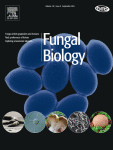Repetitive genomic sequences as a substrate for homologous integration in the Rhizopus oryzae genome
The vast number of repetitive genomic elements was identified in the genome of Rhizopus oryzae. Such genomic repeats can be used as homologous regions for integration of plasmids. Here, we evaluated the use of two different repeats: the short (575 bp) rptZ, widely distributed (about 34 copies per genome) and the long (2053 bp) rptH, less prevalent (about 15 copies). The plasmid carrying rptZ integrated, but did so through a 2256-bp region of homology to the pyrG locus, a unique genomic sequence. Thus, the length of rptZ was below the minimal requirements for homologous strand exchange in this fungus. In contrast, rptH was used efficiently for homologous integration. The plasmid bearing this repeat integrated in multicopy fashion, with up to 25 copies arranged in tandem. The latter vector, pPyrG-H, could be a valuable tool for integration at homologous sequences, for such purposes as high-level expression of proteins.
Highlights
- • Distribution of genomic repeats in R. oryzae strains and other fungi was examined.
- • Two genomic repeats were used as homologous regions for integration in the genome.
- • Small 575 bp repeat was relatively short for fulfilling homologous integration.
- • Plasmid with long 2053 bp repeat integrated in multicopy fashion with up to 25 copies.
